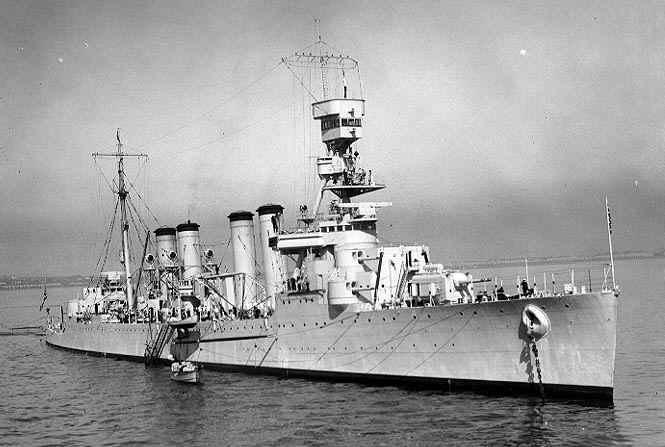
An improved weapon used on the Omaha (CL-4) class Light Cruisers and in a wet mount on the "Submarine Cruisers" of the Argonaut (SS-166) and Narwhal (SS-167) classes. They were also planned for the never-built South Dakota (BB-49) class battleships and Lexington (CC-1) class battle-cruisers.
During initial gunnery trials for USS Trenton (CL-11) on 20 October 1924, two charges of powder in the forward twin mounting were ignited. Twenty men were in the twin mount of whom four died almost immediately and ten died later from burns and inhalation of flames and gases. The remaining six were severely injured. Ensign Henry Drexler and Boatswain's Mate First Class George Cholister were posthumously awarded the US Congressional Medal of Honor for their attempts to prevent the tragedy.
On 28 July 1936, during a scheduled gunnery school firing using full charges, 6"/53 (15.2 cm) gun (Ser. No. 605) exploded aboard USS Marblehead (CL-12). The gun had fired perfectly on the first three salvos, but as the fourth salvo was being fired, an explosion in the breech killed one man instantly and seriously injured ten others, two of whom later died. The fault was eventually traced to a faulty reinforcing ring that had been used to repair the gun. This spread and failed under load.
Mark 12 was of built-up construction consisting of A tube, liner, full length jacket, two hoops, one locking ring and a screw box liner. The Welin breech was a side-swing model with Smith-Asbury mechanism. The Mark 14 was of autofretted monobloc construction. Mark 15 was to have been a lighter-weight monobloc but was not built. Mark 18 was a relined Mark 12 with chrome plating.
| Designation | 6"/53 (15.2 cm) Marks 12, 14, 15 and 18 |
|---|---|
| Ship Class Used On | Omaha (CL-4), South Dakota (BB-49), Lexington (CC-1), Argonaut (SS-166) and Narwhal (SS-167) Classes |
| Date Of Design | 1920 |
| Date In Service | 1923 |
| Gun Weight | 10.11 tons (10.27 mt) |
| Gun Length oa | 325.0 in (8.255 m) |
| Bore Length | 318.0 in (8.077 m) |
| Rifling Length | 265.3 in (6.713 m) |
| Grooves | N/A |
| Lands | N/A |
| Twist | Uniform RH 1 in 35 |
| Chamber Volume | 2,100 in3 (34.4 dm3) |
| Rate Of Fire | 6 - 7 rounds per minute |
| Type | Bag |
|---|---|
| Projectile Types and Weights | Common Mark 20 1 105 lbs. (47.6 kg)
SP Common Mark 27 Mods 1 to 8 2: 105 lbs. (47.6 kg) Common Mark 24 Mods 0 to 4 3: 105 lbs. (47.6 kg) HC Mark 34 Mods 1 to 7: 105 lbs. (47.6 kg) Illum Mark 22 Mod 1: 95.40 lbs. (43.3 kg) Illum Mark 23 Mods 1 and 2: 96.0 lbs. (43.5 kg) |
| Bursting Charge | Common Mark 20: 7.08 lbs. (2.6 kg) Explosive D
SP Common Mark 27 all Mods except 2 and 5: 2.20 lbs. (1.0 kg) Explosive D SP Common Mark 27 Mods 2 and 5: 2.50 lbs. (1.1 kg) Explosive D Common Mark 24: 5.73 lbs. (2.6 kg) Explosive D HC Mark 34: 13.22 lbs. (6.0 kg) Explosive D |
| Projectile Length | Common Mark 20: 22.8 in (58 cm)
SP Common Mark 27: 27.0 in (68.6 cm) Common Mark 24: 27.0 in (68.6 cm) HC Mark 34: 27.0 in (68.6 cm) |
| Propellant Charge | Standard: 44 lbs. (20.0 kg) SPD 44 lbs. (20.0 kg) SPDN
Flashless: 46 lbs. (20.9 kg) SPCG |
| Muzzle Velocity | Common Mark 20: 3,000 fps (914 mps)
SP Common Mark 27: 3,000 fps (914 mps) Common Mark 24: 3,000 fps (914 mps) HC Mark 34: 3,000 fps (914 mps) |
| Working Pressure | 17.5 tons/in2 (2,760 kg/cm2) |
| Approximate Barrel Life 4 | Mark 12: 400 Rounds
Mark 18: 700 rounds |
| Magazine capacity per gun | Omaha class: 200 rounds
Submarines: 360 rounds Others: N/A |
- ^Common Mark 20 rounds were mostly reserved for the older 6"/50 (15.2 cm) guns and do not appear to have been issued to the 6"/53 (15.2 cm) guns during World War II.
- ^Special Common Mark 27 had a windscreen and a thin cap and the shell body was strengthened to enhance its armor piercing qualities.
- ^Common Mark 24 rounds were issued only to submarines and had a windshield but no cap.
- ^The effect of HC rounds on barrel life was equivalent to only 0.16 of the Common round while the training round, which had a muzzle velocity of 2,300 fps (701 mps), was 0.13.
- Bourrelet diameter was 5.985 inches (15.2 cm).
| Elevation | Range | Angle of Fall | Time of Flight | Striking Velocity | Maximum Ordinate |
|---|---|---|---|---|---|
| 2.39 degrees | 6,000 yards (5,490 m) | 3.08 degrees | 7.27 seconds | 2,055 fps (626 mps) | 213 feet (65 m) |
| 4.88 degrees | 10,000 yards (9,140 m) | 7.48 degrees | 13.97 seconds | 1,580 fps (482 mps) | 790 feet (241 m) |
| 11.16 degrees | 16,000 yards (14,630 m) | 21.10 degrees | 28.27 seconds | 1,147 fps (350 mps) | 3,310 feet (1,009 m) |
| 17.82 degrees | 20,000 yards (18,288 m) | 33.97 degrees | 40.89 seconds | 1,073 fps (327 mps) | 7,070 feet (2,155 m) |
| 21.99 degrees | 22,000 yards (20,117 m) | 40.25 degrees | 48.00 seconds | 1,080 fps (329 mps) | 9,865 feet (3,007 m) |
| 26.63 degrees | 24,000 yards (21,946 m) | 46.13 degrees | 55.72 seconds | 1,098 fps (335 mps) | 13,325 feet (4,061 m) |
| 31.70 degrees | 26,000 yards (23,774 m) | 51.43 degrees | 64.29 seconds | 1,128 fps (344 mps) | 17,500 feet (5,334 m) |
| Elevation | Range | Angle of Fall | Time of Flight | Striking Velocity | Maximum Ordinate |
|---|---|---|---|---|---|
| 2.43 degrees | 6,000 yards (5,490 m) | 3.05 degrees | 7.36 seconds | 1,977 fps (603 mps) | 218 feet (66 m) |
| 5.13 degrees | 10,000 yards (9,140 m) | 8.60 degrees | 14.60 seconds | 1,410 fps (430 mps) | 858 feet (262 m) |
| 12.65 degrees | 16,000 yards (14,630 m) | 26.18 degrees | 30.85 seconds | 1,026 fps (313 mps) | 3,980 feet (1,213 m) |
| 20.57 degrees | 20,000 yards (18,288 m) | 39.70 degrees | 44.56 seconds | 1,032 fps (315 mps) | 8,640 feet (263 m) |
| 25.38 degrees | 22,000 yards (20,117 m) | 45.80 degrees | 52.36 seconds | 1,057 fps (322 mps) | 12,000 feet (3,658 m) |
| 31.17 degrees | 24,000 yards (21,946 m) | 51.88 degrees | 61.40 seconds | 1,105 fps (337 mps) | 16,420 feet (5,005 m) |
| 39.12 degrees | 26,000 yards (23,774 m) | 58.93 degrees | 73.55 seconds | 1,105 fps (337 mps) | 23,130 feet (7,050 m) |
- ^The maximum elevation for these guns in casemates was 20 degrees while those used in twin mounts had a maximum elevation of 30 degrees. The submarine mountings had a maximum elevation of 25 degrees.
- ^Values for SP Common Mark 27 and Common Mark 24 from BuOrd OP 1188 page 24.
- ^Values for HC Mark 34 from BuOrd OP 1188 page 27.
| Range | Side Armor | Deck Armor |
|---|---|---|
| 6,300 yards (5,760 m) | 4.0" (102 mm) | --- |
| 9,000 yards (8,230 m) | 3.0" (76 mm) | --- |
| 13,800 yards (12,620 m) | 2.0" (51 mm) | --- |
| 17,200 yards (15,730 m) | --- | 1.0" (25 mm) |
| 20,800 yards (19,020 m) | --- | 1.5" (38 mm) |
| 23,600 yards (21,580 m) | --- | 2.0" (51 mm) |
- These figures are taken from USN armor penetration curves published in 1942 as shown in "US Naval Weapons."
| Range | Side Armor | Deck Armor |
|---|---|---|
| 8,200 yards (7,500 m) | 4.0" (102 mm) | --- |
| 12,200 yards (11,160 m) | 3.0" (76 mm) | --- |
| 17,000 yards (15,540 m) | 2.0" (51 mm) | --- |
| 19,400 yards (17,740 m) | --- | 1.0" (25 mm) |
| 22,600 yards (20,670 m) | --- | 1.5" (38 mm) |
- These figures are taken from USN armor penetration curves published in 1942 as shown in "US Naval Weapons."
| Designation 1d | Casemate Mounts
Omaha (8): Mark 13 South Dakota (16) and Lexington (16): Mark 13 (?) Twin Mounts
Wet Mount
|
|---|---|
| Weight | Twin Mount: 51.8 tons (52.6 mt)
Casemate Mount: 19.1 tons (19.4 mt) Submarine Mount: 37,700 lbs. (17,100 kg) |
| Elevation | Twin Turret: -10 / +30 degrees
Casemate Mount: -10 / +20 degrees Submarine Mount: -10 / +25 degrees |
| Elevation Rate | Twin Mount: 7.6 degrees per second
Casemate and Submarine Mount: Manual operation, only |
| Train | Twin Mount: about +150 / -150 degrees
Casemate: about +75 / -75 degrees Submarine Mount: 360 degrees |
| Train Rate | Twin Mount: N/A
Casemate and Submarine Mount: Manual operation, only |
| Gun recoil | 18 in (45.7 cm) |
- ^Cincinnati (CL-6), Raleigh (CL-7), Detroit (CL-8), Richmond (CL-9) and Marblehead (CL-12) had the after lower casemate guns removed during the 1930s as weight compensation for growth in other areas. Marblehead had one of these guns remounted on the centerline in a superfiring position on the after superstructure. During World War II, the remaining cruisers were reduced to 10 guns by removal of the two after casemate guns and Marblehead lost her centerline gun. In 1945 Detroit was reduced to eight guns by the removal of her two forward upper casemate guns which were replaced by twin 40 mm mountings.
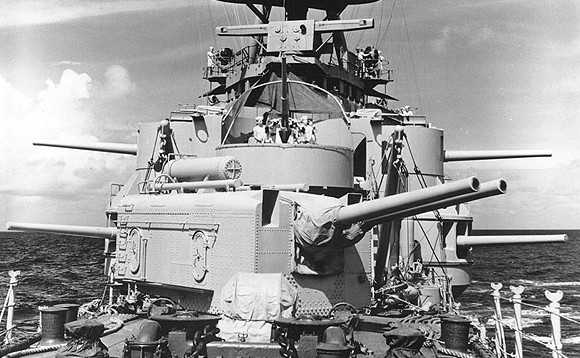
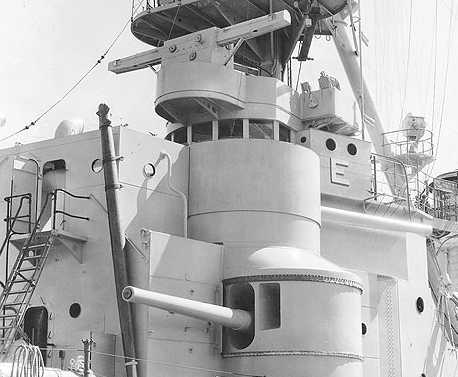
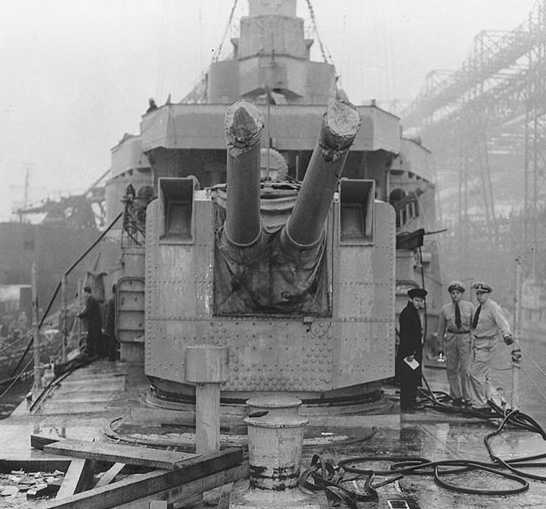



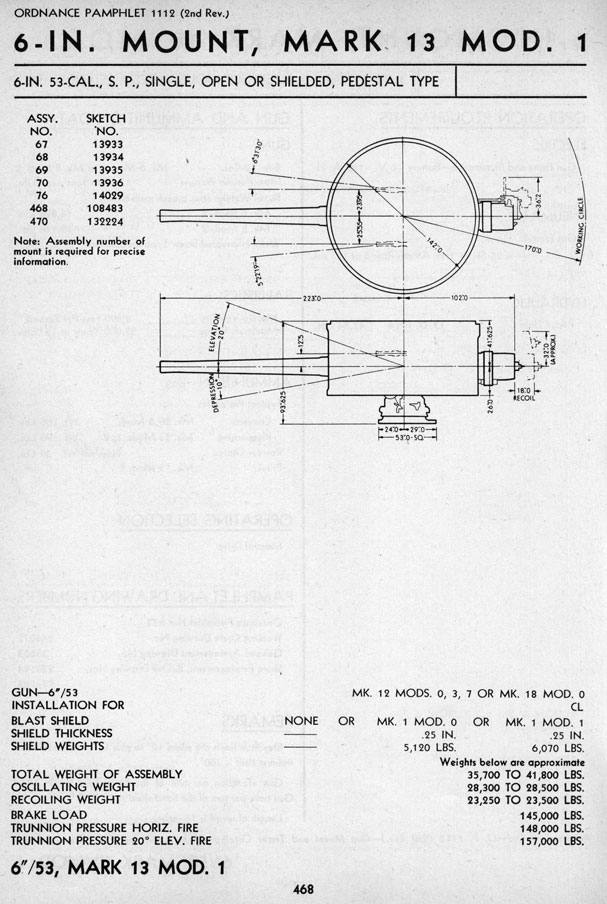

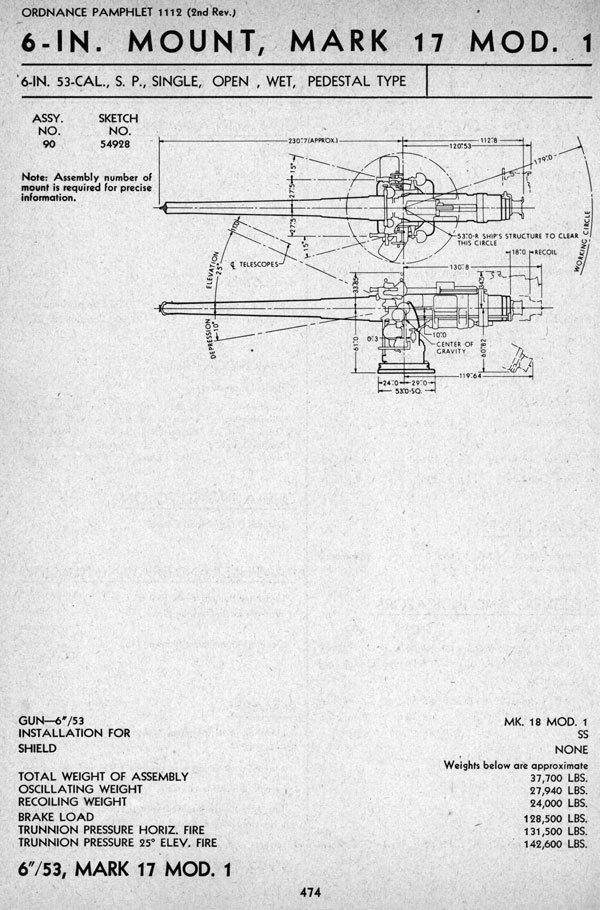


"Naval Weapons of World War Two" by John Campbell
"US Cruisers: An Illustrated Design History," "US Submarines through 1945: An Illustrated Design History" and "US Naval Weapons" all by Norman Friedman
"Cruisers of World War Two" by M.J. Whitley
---
"Evolution of Battleship Gunnery in the U.S. Navy, 1920-1945" by William J. Jurens
---
"Abridged Range Tables for U.S. Naval Guns - Ordnance Pamphlet No. 1188 - 13 June 1944" by Bureau of Ordnance (BuOrd), Department of the Navy
"U.S. Explosive Ordnance - Ordnance Pamphlet No. 1664 - May 1947" by Bureau of Ordnance (BuOrd), Department of the Navy
---
Gene Slover's Navy Pages
20 June 2007 - Benchmark
15 June 2010 - Added picture and cutaway of SP Common Mark 27 projectile
10 January 2019 - Converted to HTML 5 format, reorganized notes and added mounting sketches
30 August 2020 - Formatting changes
19 December 2020 - Add comment regarding accident aboard USS Marblehead (CL-12)
01 August 2023 - Revised range table for SP Common Mark 27 and added ammunition information
25 September 2024 - Added range table for HC Mark 34
